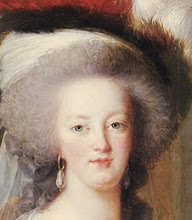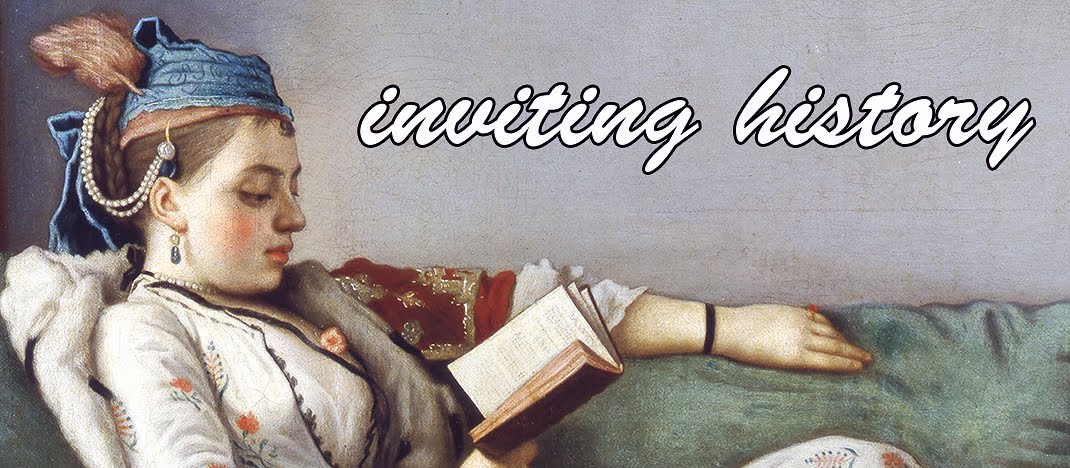Thursday, August 23, 2012
Featured Book: Former People: The Final Days of the Russian Aristocracy by Douglas Smith
Lately, I've been on a little bit of a Russian history kick. And since I've always, like many people, had a fascination with revolutions and the concept of "fallen aristocracy," I thought that this upcoming book from Farrar, Straus and Giroux looked particularly interesting.
Former People: The Final Days of the Russian Aristocracy by Douglas Smith recounts the story of the aristocrats of Russia, many of whom found their homes burned, their wealth and liveliehoods lost, and even their lives threatened--or ended.
From Amazon.com:
Epic in scope, precise in detail, and heart-breaking in its human drama, Former People is the first book to recount the history of the aristocracy caught up in the maelstrom of the Bolshevik Revolution and the creation of Stalin’s Russia. Filled with chilling tales of looted palaces and burning estates, of desperate flights in the night from marauding peasants and Red Army soldiers, of imprisonment, exile, and execution, it is the story of how a centuries’-old elite, famous for its glittering wealth, its service to the Tsar and Empire, and its promotion of the arts and culture, was dispossessed and destroyed along with the rest of old Russia.
Yet Former People is also a story of survival and accommodation, of how many of the tsarist ruling class—so-called “former people” and “class enemies”—overcame the psychological wounds inflicted dddby the loss of their world and decades of repression as they struggled to find a place for themselves and their families in the new, hostile order of the Soviet Union. Chronicling the fate of two great aristocratic families—the Sheremetevs and the Golitsyns—it reveals how even in the darkest depths of the terror, daily life went on.
Told with sensitivity and nuance by acclaimed historian Douglas Smith, Former People is the dramatic portrait of two of Russia’s most powerful aristocratic families, and a sweeping account of their homeland in violent transition.
Former People is due to be released on October 2, 2012.
Tuesday, August 7, 2012
Review: Treacherous Beauty: Peggy Shippen, the Woman behind Benedict Arnold's Plot to Betray America by Stephen H. Case and Mark Jacob
[A review copy of this book was provided by the publisher upon my request.]
When most people consider the role that women played in the American Revolution, they probably turn right to women like Abigail Adams or Molly Pitcher, who both supported the revolution in their own ways. But what about the women who did not support the revolution or who even worked against it?
Treacherous Beauty: Peggy Shippen, the Woman Behind Benedict Arnold's Plot to Betray America by Stephen H. Case and Mark Jacob is the first modern popular biography of this enigmatic and often ignored figure in American history--Peggy Shippen, the wife of the infamous Benedict Arnold. Peggy, born Margaret, was born into the world of Philadelphia's high society. Not much is known about her early childhood, although Case and Jacob suggest that she received an above-average education for her sex and learned much about finances through her father and mother. She came of age during the American Revolution in British-occupied Philadelphia and developed a strong social reputation. She was considered to be one of the most beautiful women in the city and frequently attended balls and other social gatherings with others of her rank--and British soldiers, including one John André, who would later play an important role in the "Benedict Arnold plot."
Peggy was considered to be beautiful, loving and sweet, but she was not Benedict Arnold's first choice for a new wife. Case and Jacob point out that many of the lines Benedict used in his courting letter to Peggy were, in fact, recycled from letters he had written to a previous potential wife. However, the two were eventually married and what soon followed is the subject of much debate and controversy, even today. How much of a role did Peggy Shippen play in Benedict Arnold's decision to become a spy for Britain? Did she know about his betrayal?
Although the title of the book labels Peggy to be the woman "behind" the plot, I don't think that the authors, if it was their attention to paint her as the mastermind, successfully provided enough evidence to suggest that Peggy was in fact behind the betrayal. Unfortunately, much of Peggy's correspondence was destroyed or burned in the wake of the plot, perhaps to save her reputation. In the past, Peggy's involvement in the plot to has been downplayed at best and completely ignored at worst--"the poor innocent wife of Benedict Arnold," as she was called after news of his betrayal broke out. And although they do not provide a strong case for Peggy being the woman "behind" the plot, Case and Jacob provide ample information which not only indicates she knew about Benedict Arnold's betrayal--but that she helped him as well.
The plot to betray America is, understandably, the real meat of the book. Because there are gaps in the recorded history of Peggy's life, some of the narrative focuses much more on the actions of Arnold--whom Peggy often followed--and John André, who left behind a more tangible historical trail than Peggy Shippen. However, Case and Jacob have made excellent use of the resources they had to create an interesting and rounded narrative of Peggy's life--from her birth in pre-revolutionary American to the betrayal of the revolution and to her last years in England, where she spent most of her time dealing with poor state of her family's finances and securing a future for her children.
I recommend Treacherous Beauty: Peggy Shippen, the Woman Behind Benedict Arnold's Plot to Betray America by Stephen H. Case and Mark Jacob to readers who are interested in the American Revolution, 18th century, or women's studies in the 18th century.
Subscribe to:
Posts (Atom)
Search This Blog
Blog Archive
About Inviting History
Inviting History is a book and history blog dedicated to especially interesting, overlooked or niche areas of history, as well as their interpretation in both non-fiction and literature.
Inviting History Book Reviews
Updated Tuesdays, Thursdays and Sundays with book reviews, historical posts, and more!
**Inviting History Has Relaunched as of April 2019!**
Inviting History Book Reviews
About Me

- Anna Gibson
- (Formerly Anna Amber)
"History is scholarship. It is also art, and it is literature."
I am a history loving writer who enjoys reading and blogging in my spare time. I currently run three blogs: Reading Treasure, a blog dedicated to books and more about Marie Antoinette and 18th century France; Treasure for Your Pleasure, a Tumblr microblog dedicated to Marie Antoinette and her world; and my newest blog, Inviting History, a book blog dedicated to unique and overlooked history books.


